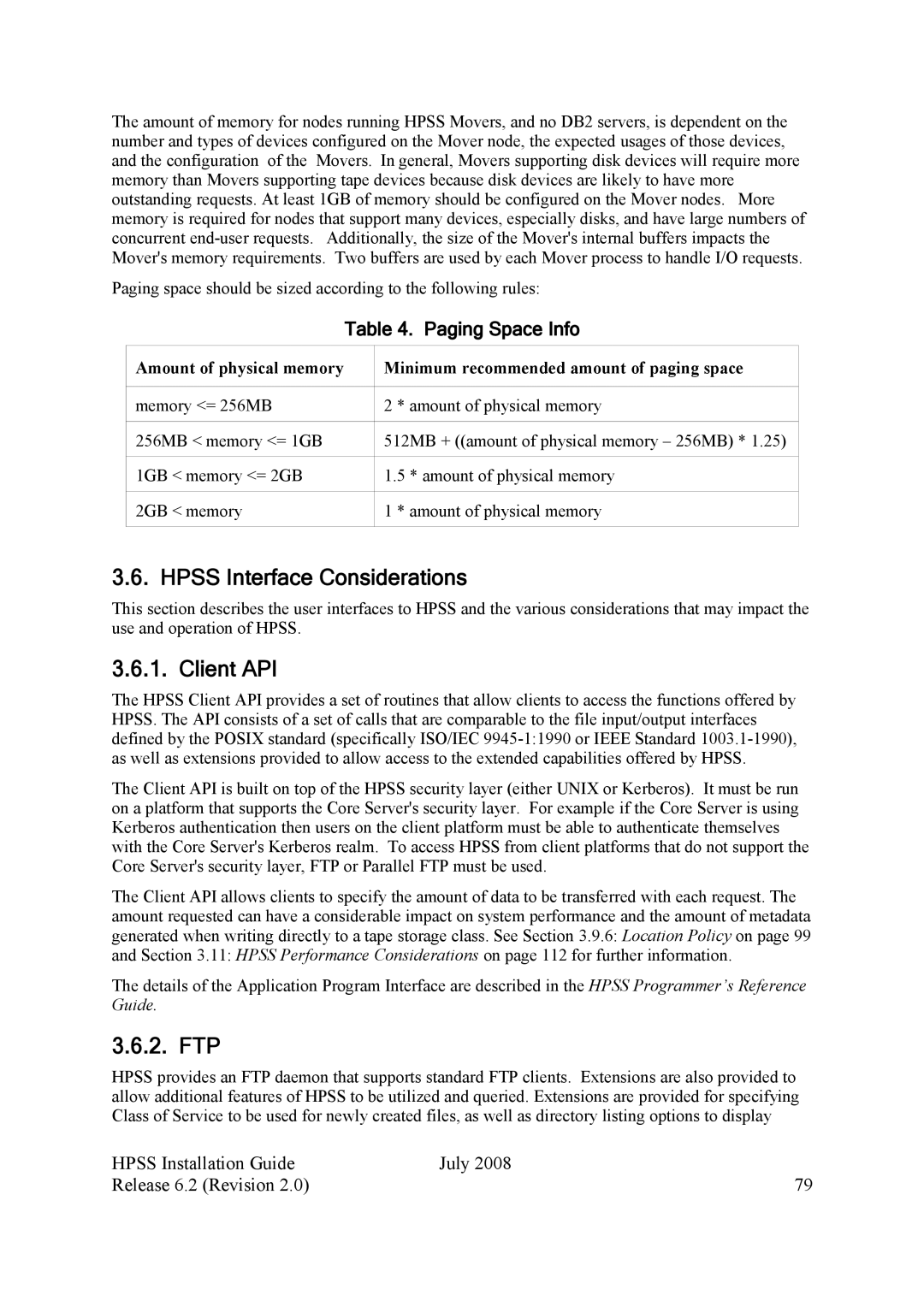The amount of memory for nodes running HPSS Movers, and no DB2 servers, is dependent on the number and types of devices configured on the Mover node, the expected usages of those devices, and the configuration of the Movers. In general, Movers supporting disk devices will require more memory than Movers supporting tape devices because disk devices are likely to have more outstanding requests. At least 1GB of memory should be configured on the Mover nodes. More memory is required for nodes that support many devices, especially disks, and have large numbers of concurrent
Paging space should be sized according to the following rules:
Table 4. Paging Space Info
Amount of physical memory | Minimum recommended amount of paging space |
|
|
memory <= 256MB | 2 * amount of physical memory |
|
|
256MB < memory <= 1GB | 512MB + ((amount of physical memory – 256MB) * 1.25) |
|
|
1GB < memory <= 2GB | 1.5 * amount of physical memory |
|
|
2GB < memory | 1 * amount of physical memory |
|
|
3.6. HPSS Interface Considerations
This section describes the user interfaces to HPSS and the various considerations that may impact the use and operation of HPSS.
3.6.1. Client API
The HPSS Client API provides a set of routines that allow clients to access the functions offered by HPSS. The API consists of a set of calls that are comparable to the file input/output interfaces defined by the POSIX standard (specifically ISO/IEC
The Client API is built on top of the HPSS security layer (either UNIX or Kerberos). It must be run on a platform that supports the Core Server's security layer. For example if the Core Server is using Kerberos authentication then users on the client platform must be able to authenticate themselves with the Core Server's Kerberos realm. To access HPSS from client platforms that do not support the Core Server's security layer, FTP or Parallel FTP must be used.
The Client API allows clients to specify the amount of data to be transferred with each request. The amount requested can have a considerable impact on system performance and the amount of metadata generated when writing directly to a tape storage class. See Section 3.9.6: Location Policy on page 99 and Section 3.11: HPSS Performance Considerations on page 112 for further information.
The details of the Application Program Interface are described in the HPSS Programmer’s Reference Guide.
3.6.2. FTP
HPSS provides an FTP daemon that supports standard FTP clients. Extensions are also provided to allow additional features of HPSS to be utilized and queried. Extensions are provided for specifying Class of Service to be used for newly created files, as well as directory listing options to display
HPSS Installation Guide | July 2008 |
Release 6.2 (Revision 2.0) | 79 |
